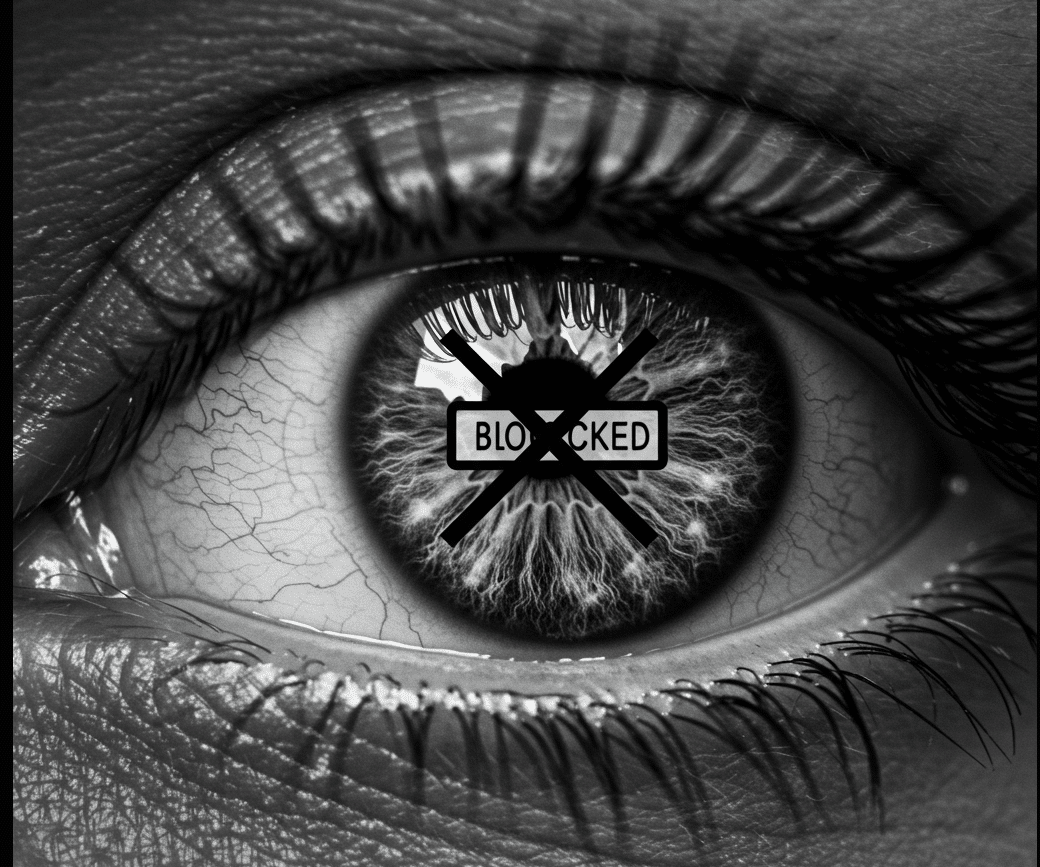Small business owners have plenty on their minds, from HR to daily operations, slow season profits and, of course, marketing stressors. Small business marketing doesn’t have to be stressful, though — in fact, it can even be one of your strengths, with a little intention, delegation, and strategy.
For years, I have been consulting with small business owners who can’t stand social media, have no time for outreach, and just need marketing processes to work for them, “like, yesterday,” as one owner put it. In my experience, many are yet to fully grasp what SMB marketing involves in the first place, with some owners putting too much attention on one specific aspect (such as social media reels) and less on a comprehensive strategy to fully engage their target markets.
What is Small Business Marketing?
Small business marketing is a multi-faceted approach involving strategies and tactics that have both short- and long-term goals to promote your products and services. The end goal is to reach your target audience and convert them into customers, especially customers that return again and again, or refer others to your small business.
This takes the form of numerous steps, including building an online presence through your website, social media, and content marketing strategies. It also involves email or newsletter marketing, search engine optimization (SEO) to attract your local clients, paid advertising, and other customer outreach strategies. Some businesses with an eye on their local market also engage in live events, in-person collaborations and giveaways, and other non-digital strategies.
Small Business Marketing Technology
As always, there’s a tool for everything. You can manually execute strategies for any of the above aspects, or you can find the best tool to market small business. The technology varies in efficacy based on the size and industry of your business, and how much time, energy, or staff you have to manage the tools’ implementation and maintenance (remember, a tool is only as effective as the strategy and people who are using it). But, in a world of AI powered technology, don’t underestimate how helpful some marketing tools can be. The following presents various categories of SMB marketing tools, each accompanied by an industry-leading example.
Customer Relationship Management (CRM) Tools
HubSpot CRM
If you’re in need of a friendly assistant that doesn’t impact your budget, consider HubSpot. It’s straightforward to use and allows you to have all your customer interactions, including marketing, sales, and service tools, in one place. There’s nothing more helpful than having everything you need to manage your customer relationships and marketing efforts interconnected.
SEO Tools
Ahrefs
Also helpful in studying your competitors’ success and strategies, along with analyzing and improving your own site. Ahrefs will help you better understand the keywords your customers are searching for.
Social Media Tools
Salesforce
Salesforce uses specific strategies like targeted social media ads and influencer collaborations to increase reach and engagement.
Design Tools
Canva
To get started with marketing you’ll want consistent colors, fonts, logos, and a cohesive “vibe” that truly demonstrates what your business is about. If your SMB doesn’t have its own marketing department, consider using Canva to create your marketing collateral. The straightforward software design makes it easy to create print-worthy brochures and flyers, along with social media graphics, all in simple steps.
Performance Tools
realize:
So much of marketing concentrates on the top part of the funnel, but you also want to make sure people are moving right through it to the point of sale (and buying!). realize: is a performance advertising platform that uses a generative AI based on nearly two decades’ worth of first-party data to identify and target those most likely to purchase. It also offers a suite of user-friendly content creation tools to help combat the creative fatigue endemic to marketing departments in the digital age.
Drive customer acquisition at scale, beyond the limitations of Search and Social. realize:
Small Business Marketing Channels
It can be easy to overlook important marketing channels when you’re trying to operate a small business. Here are the key channels to keep in mind while you’re developing your marketing strategies for the years ahead:
Social Media
You might prefer to skip social media, but the reality is that today’s marketing strategies have to include it if you want optimal reach and interaction amongst customers. Key channels to work to include in your own strategy include:
- Facebook.
- Instagram.
- TikTok.
- YouTube.
- LinkedIn.
Don’t feel like you need to take them all on at once. Instead, focus on one or two of the social media channels and do them well. Bonus points if channels integrate together, meaning you only have to do the work once!
Content Marketing
Include blogs and SEO in your content marketing plan. Blogs engage potential clients in an informal and approachable format, providing free education along the way that establishes you as the authority in your industry. Repurposing content as part of a cohesive content marketing strategy means you aren’t just using a blog or social post once, but across numerous platforms, in different formats, to reach more people.
Email Marketing
Don’t forget that the relationship between your business and customers is ongoing. A great way to keep that relationship strong (and you at the forefront of their minds) is utilizing e-newsletters. These inform current customers, but also can pull in disengaged former customers to buy again, and it’s also a great place to offer special VIP price cuts or other advantages.
Online Advertising
Just because your budget isn’t huge doesn’t mean you have to forego online advertising. Search and social are typically solid places to start, but be aware that you will exhaust those channels relatively quickly. Targeted display advertising can be a more effective way to drive conversions, letting you reach the customers most likely to purchase.
Influencers and Collaborations
Do you know someone local in your community that is well-recognized amongst your customers? Use them as a partner in your business to help educate and sell your product. These collaborations can be a more engaging way to reach a wider audience. You don’t have to be limited to individuals, either: Is there a fellow business who offers a product or service that complements your own? Work together to support each other’s businesses by offering giveaways or reciprocal services. A joint event or open houses could be another great partnership option.
The Open Web
Small businesses can significantly benefit from engaging with the open internet. This encompasses all publicly accessible websites and online platforms beyond the confines of major social networks and search engine networks. By establishing a presence on the open web, businesses can enhance their visibility and credibility. From a strategic perspective, small businesses can diversify their marketing efforts, reduce reliance on specific platforms, and reach a wider, more varied audience which will prevent diminishing revenues experienced from channel fatigue and maximize their marketing budgets.
Start Marketing Your Small Business in Four steps
Figure Out Your “Why” With a Brand Positioning Statement
Your brand purpose should be “crystal clear” and well documented, says Channing Muller, founder of DCM Communications. A brand positioning statement involves multiple aspects including your target audience, market category, unique value proposition (UVP), your differentiators, and one or more compelling reasons to buy your product or service.
“Most small businesses focus on a logo and tagline because those are the ‘fun’ elements of the brand, but if you don’t have a clear brand positioning statement, you’re missing a major piece of the puzzle,” warns Muller. “Your positioning statement is what tells potential clients why they should choose you over the competition. It’s not just words — it’s the foundation for how you market, sell, and build long-term customer relationships.”
Muller recommends not worrying so much about “trying to sound clever,” and more about giving potential clients or customers the info they need up front. “If someone visiting your website or social media profiles doesn’t immediately understand what you do and who you do it for, how can they know if it’s for them? They can’t, and they move on.”
Build a Strategy
Create a plan of attack for all the necessary aspects of a marketing strategy, but know that it doesn’t have to be all at once. You might play with throwing more time and money at different aspects throughout the business year, or based on your industry’s natural calendar.
Analyze Performance
You won’t know what’s working (or not) if you don’t check on a regular basis. Make a plan for how to adjust based on the data you’re seeing. For example, if one social media platform is taking off more than another, determine whether to focus most of your resources on that, or to spread out your resources to build up other channels as well.
Be Prepared to Change Course
As with any aspect of business, flexibility is key. You might notice after a few months that one aspect of your strategy isn’t performing. You can quit that aspect, or ask for expert help in adjusting, or even implement a different tech tool to determine if there’s information you’re missing.
You’ll notice marketing trends evolve anyway, so what worked months ago might not be the most effective way to reach your audience now. “Right now, Meta is shifting content moderation responsibilities onto users, which means the way your posts are reviewed (and possibly restricted) is evolving,” says Muller. “TikTok’s algorithm prioritizes new creators, giving fresh voices more visibility. LinkedIn is leaning heavily into personal storytelling over corporate jargon. The takeaway? Stop clinging to what worked six months ago and start evaluating what’s working now to bring in engagement. A good social strategy isn’t about mastering every platform — it’s about mastering the right ones for your business.”
Small Business Marketing Strategies: Relatively Inexpensive Ways to Maintain and Grow Your Business
Once you’ve established your marketing strategy and have been executing it (hopefully successfully!) for a few months, you might be asking, what now? This is when it can help to try some relatively inexpensive new strategies for maintaining or growing your business. In addition, you should continue to keep an eye on the data to ensure your initial strategy is still performing well.
Collabs/Trades With Other Small Business Owners
Cincinnati-based florist Running on Blooms made an appearance at a local restaurant’s opening day, giving away flowers with business cards. The big show of having other vendors at the event helped the restaurant garner attention, while the giveaways created repeat customers for the nearby florist. Look to businesses right around you for similar collaboration opportunities, whether digital or in person.
Authentic Live Reels on Socials
Are you witnessing the results of your business’ product or service with a favorite client? Grab your camera and go live, or record a reel to post ASAP, to show the results of your work in a tangible and genuine way. It builds your reputation as a small business owner that people recognize as someone who gets things done. Don’t forget to repurpose your best performing social posts into other content as well.
Video Customer Testimonials
Ask for a quick video testimonial that can be recorded on their own time. This can be a simple ask through text or email, or even in person for the right type of customer. Or, you can look to a tool like Vocal Video to make that raw footage look more professional, and integrate it into your website for maximum impact.
Creating a Clear Landing Page or Website
“Everyone’s business or personal brand needs at least one landing page or website,” says Jaclyn Zukerman Delory, CEO of Next On Scene Media. “If the TikTok ban taught us anything, it’s that social media can be gone tomorrow, so definitely make sure you create a site for yourself where you can be seen as an expert.”
Ensuring You’re Targeting the Right Audience
Display advertising can be a powerful tool in the consideration and action stages of the funnel, so long as you’re targeting the correct audience on the correct platforms. By working with an ad agency with the appropriate tools — ideally a mix of performance-focused AI to target and optimize in real-time, and fast, simple content creation tools — you can make sure you’re reaching those most likely to convert.
Drive customer acquisition at scale, beyond the limitations of Search and Social. realize:
How to Determine Who Will Manage Your Small Business Marketing
Marketing isn’t the best part of your business to DIY if you don’t have the time, energy, and interest to invest in setting up the processes. It can be helpful to delegate or outsource parts you find confusing, or work with a marketing strategist to get you started, whether you end up hiring out for the full plan execution or not. You can choose one overarching consultant or agency, or you can piece together specialists in each area. Here are just a few roles you can choose to hire for your marketing team:
- Social media management.
- Content strategist.
- Performance analyst.
- B2B digital marketing specialist.
- SEO expert.
- Email marketing consulting.
- Communications and public relations.
Whichever you choose, check you know up front what your consultant does and does not specialize in, to ensure you’re getting the best person for each part of the job. You can look for skillsets such as adaptability and flexibility, demonstrated background on improving marketing outcomes for previous roles or clients, and knowledge of current best practices in their specific area or your industry.
Key Takeaways
As you evaluate your small business marketing plan, create a strategy first, so you don’t end up with a list of to-do’s without understanding the “why” behind them. Be willing to shift every few months after analyzing the data and revisiting your strategy, tweaking what needs changing, and trying new things. Hire experts for tasks you aren’t confident about, or slowly build a talented marketing team. Finally, prioritize authenticity across all of your marketing endeavors, but especially social media.
Frequently Asked Questions (FAQs)
How has social media impacted marketing for small businesses?
Social media has helped small businesses who couldn’t always compete with larger businesses’ budgets when trying to attract clients and customers. With regular and engaging posts across multiple platforms like X, Instagram, TikTok, Meta, and others, small businesses are able to meet more customers where they hang out, and convert them into reliable customers.
What are alternatives to Meta to advertise your business?
Small business owners have had excellent luck on TikTok, especially when showing behind the scenes processes in their businesses, which ultimately helps customers view them as “real people” and gain trust in them. Since search and social are delivering less reliable results these days, though, targeted display ads are a solid choice for reaching customers towards the middle and bottom of the funnel.
What are alternatives to Google Ads to advertise your business?
Alternatives to Google Ads include TikTok ads, LinkedIn ads, Instagram ads, and Realize. Local businesses can also look to their own city media such as magazines, newspapers, and digital publications for additional advertising opportunities.



